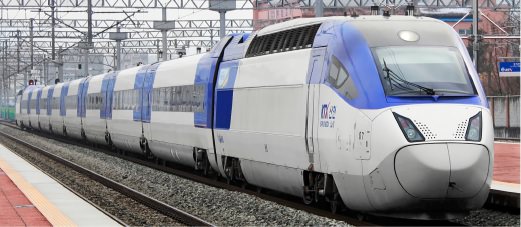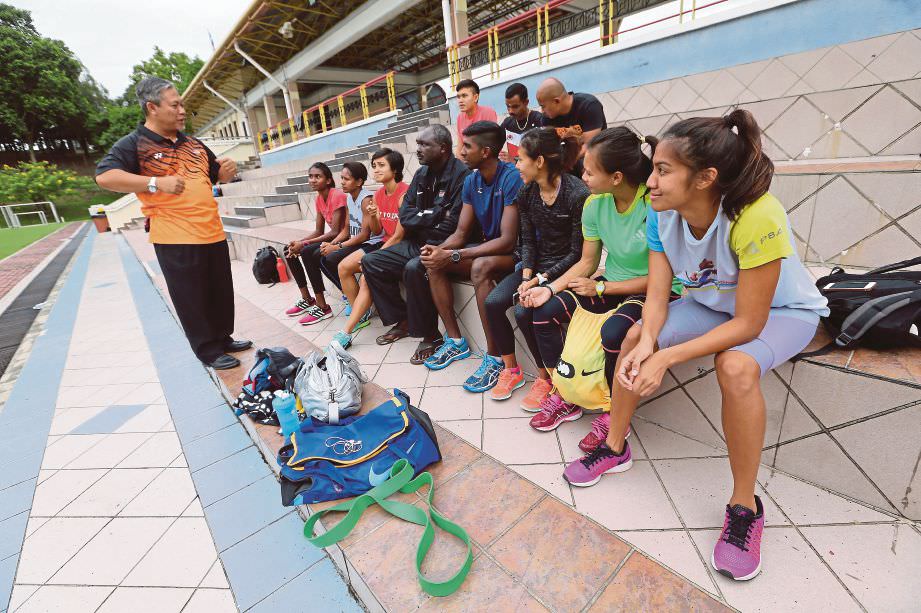SEOUL: PASSENGERS begin boarding a South Korean high-speed train (called the KTX) minutes before it departs the Seoul station, bound south of the country to Daejeon, enroute to Busan.
Exactly on the dot of its scheduled 0930hours departure, KTX #123 rolls out as smooth as silk, guaranteeing passengers one hour of mesmerisation.
It took just one hour three minutes to reach Daejeon, South Korea’s fifth largest metropolis with a population of about two million.
Located in the centre of the country, Daejeon serves as a hub of transportation and is at the crossroads of major routes.
The KTX, which made its debut in 2004, has changed a three-hour bumpy bus ride into just an hour’s trip. The only sound you hear at 280kph is the gentle whiz of electrical poles passing by.
The almost complete lack of sound inside the train is attributed to the continuous welded rail construction.
Sitting in the first-class section of the KTX, I soon turn to my Samsung phone to browse the Internet, courtesy of the onboard WiFi.
A cabin attendant passes by, pushing a trolley with steaming cupsof cappuccino.
You get bigger seats, more leg room, free snacks and a much quieter trip travelling in first class.
South Koreans prefer a quiet time on board the KTX.
If you need to make lengthy calls on your mobile phone, they will ask you to do so on the platforms between the coaches.
En route, you pass modern cities dotted with high-rise apartments, where most South Koreans live. The landscape soon changes, with rice fields and orchards dominating the sprawling valleys.
With the historical opening of the KTX line in April 2004, South Korea has joined the league of France, Japan,China,Germany,the United Kingdom and Spain in entering the super highspeed train era, operating at speeds of 300kph.
South Korea has referred the KTX as the biggest “national policy project” in the country’s history, changing the lives of its citizens by enabling them to reach anywhere in the country within a space of three hours.
It also has a huge influence on the country’s economy, social and cultural aspects.
Fast, safe, convenient and environmentally friendly, the KTX is also a product of the latest South Korean technology and expertise.
And the country, which has a proven track record in building and developing HSR trains and related services, is now ready to export its trains and expertise to the world.
The proposed Malaysia-Singapore HSR project is high on the South Korean government agenda, according to South Korean Land, Infrastructure and Transport Minister Yoo Il-ho.
The South Korean government will form a consortium to bid for the project, he told the New Sunday Times here recently.
He says the consortium will comprise the Korea Rail Network Authority (KR), Korea Railroad Corp, Korea Land & Housing Corp and major South Korean construction companies.
It is understood that Hyundai Rotem Company, the South Korean maker of HSR trains, will also be in the consortium. Yoo says Malaysian and Singaporean companies will be invited to join the consortium by the end of this year.
“South Korea will take part in the (bidding) process.
It can provide the most efficient model for the Malaysia-Singapore HSR link construction project and other matters, such as technology transfer and regional (property) development, will also be included,” the minister said.
“South Korea has developed its own technology and when you look at South Korea’s experience in 11 years of operating high-speed rail, it proves the excellence of South Korea’s HSR system.”
South Korea, with a population of 50.6 million, is further advanced technologically in many areas, particularly in electronics, cars and public transportation.
The whole country has nearly 5,000km of rail network, including 3,945km of regular railway and 701km of high-speed railway.
The Seoul Metropolitan Subway is one of the most heavily used subway systems in the world, with more than eight million commuters daily.
It is also one of the biggest subway systems worldwide, running 288km in length.
Daejeon, in central South Korea, is also the headquarters of KR, the owner and developer of the national railway networks.
KR chairman and chief executive officer Kang Yeong-il says although South Korea is rather late in expressing its interest, the country has a number of advantages compared with competing bidders China and Japan.
“We have 23 years of experience in HSR civil works, designing and manufacturing of rolling stocks.
We have the technological capability now. We began with technology transfers from other countries and, in that process, we encountered many trials and errors.
“We now have the know-how in those areas. We can offer the know-how to make the (Malaysia-Singapore) project more viable.
-nst







